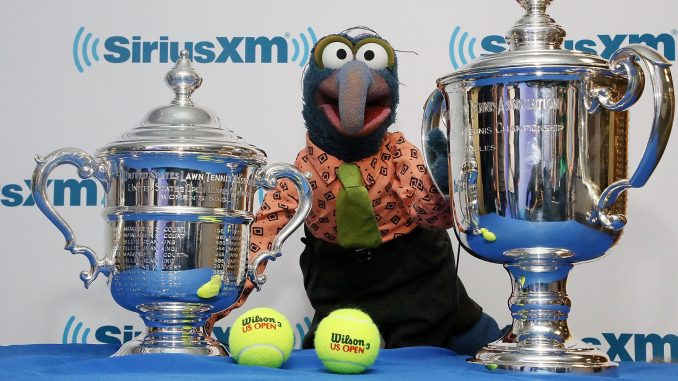
Our society loves to consume entertainment in all its forms. Whether it’s streaming films and TV shows via apps such as Netflix and Hulu or scrolling TikTok, Instagram, or Twitter, media are now ubiquitous.
Thanks to smartphones and iPads, it’s also now readily available to kids. There’s an increasing presence of people and characters that pop culture refers to as “transgender” in the entertainment industry, aimed at drawing in younger audiences and normalizing gender confusion and gender intervention treatment.
One of my favorite singer-songwriters, Taylor Swift, on Oct. 21 released an incredible album, “Midnights.” The music is catchy; the lyrics are stunning. She’s known for her glamorous, dramatic, music videos. Swift, who has supported Democratic politicians and is pro-LGBT rights, features a transgender model in one of her upcoming music videos, which was spotted by activists when she released this video mashup.
The full video itself hasn’t been released yet, but in the scene, Swift is gently rubbing Laith Ashley’s bare back in bed. LGBT activists have already applauded Swift for featuring a transgender model, especially as an object of desire. Just that clip has inspired promotional posts about Ashley’s life and transition. This is one subtle example, which most people would not have noticed were it not for the fact that Ashley was already a well-known model, at least among activists.
Normalizing transgender people in entertainment is sometimes not so subtle. One of the most popular apps for teenagers is TikTok. A simple search will show hundreds of trans users discussing their lifestyles, gender confusion, treatment, transitions, and more. They aren’t shy about it, and articles like this one on “Today” rave about them under the guise that they are informing, teaching, and educating.
“Being myself, showing up, taking up space and letting people know we exist will slowly change culture,” a transgender TikTok user was quoted as saying in the article.
YouTube is another popular destination with teenagers and middle schoolers. On YouTube, transgender activists with millions of followers are common. With almost 20 million subscribers, Shane Dawson is one of the most popular transgender YouTubers. Dawson’s cohort, Jeffree Star, has almost 16 million subscribers. Both are focused on entertainment, media, and makeup. James Charles has a makeup line and is popular among teenage girls who may have just started to become interested in makeup and fashion.
All of these YouTubers are charming and fun, and their videos are exciting and even informative, which may be why young girls are drawn into the videos and eventually into the LGBT lifestyle and specifically the normalization of the transgender lifestyle.
Online, they don’t look frustrated, sad, or even gender confused. They look happy, chipper, and often, wealthy. (James Charles is worth $22 million.) But plenty of data and anecdotes suggest that after gender-intervention treatment, many transgender people regret transitioning and wish they could go back, and feel stuck in a body that’s not their own.
It doesn’t start or end with teenagers. In fact, the quest to normalize the transgender lifestyle begins very early in the entertainment industry. The new “Muppet Babies” series featured an episode, “Gonzo-rella,” where the male Muppets character attends a princess ball wearing a dress, because the child didn’t want to go in “boys’ clothes.” When the character’s friends realizes who it is, they all discuss how kind it is to let people wear what they want and be themselves.
The problem with such shows featuring such blatant LGBT-friendly characters targeted at kids is that it normalizes the transgender lifestyle for children, and often, that’s not age-appropriate, especially if the show highlights overtly sexual content, which often goes hand in hand with the lifestyle.
The transgender movement has hit an all-time high in the entertainment industry, an industry that has significant power to influence children and teenagers.
Fashion trends, movie lines, music, and character imitations often develop after a hit show, film, or music video has taken a hold of a swath of society. That’s especially the case with young people who are particularly malleable and susceptible to entertainment and peer pressure.
Parents and concerned friends and family should keep an eye on what children and teenagers are consuming when it comes to media content, from messaging and apps to internet use.
Apps can open up a positive window into another world, but they can also showcase things that are unhealthy for kids, and that goes not only for transgender content, but other things as well.
The draw of transgender content online is that it often shows a person who seems to have achieved a happy, cool, desirable outcome.
Like much else on the internet, that’s a ruse. There are (at least) two sides to every story. For every attractive, filtered face, there’s a normal face with normal flaws.
The same goes for transgender people, who are often trying to fill their own void by receiving attention, praise, and flattery online. In doing so, they are drawing young people into a lifestyle that could ultimately be harmful.
The Daily Signal publishes a variety of perspectives. Nothing written here is to be construed as representing the views of The Heritage Foundation.
Have an opinion about this article? To sound off, please email letters@DailySignal.com and we’ll consider publishing your edited remarks in our regular “We Hear You” feature. Remember to include the url or headline of the article plus your name and town and/or state.

Be the first to comment